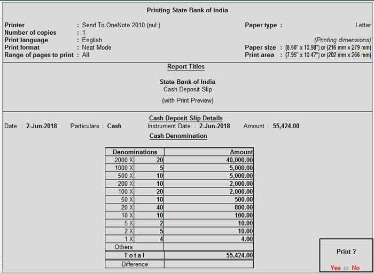
The accounting process is the systematic recording of all monetary transactions. Generally, when recording transactions in a journal, accountants do not focus on the nature of classification. But when it comes to a ledger, they record all the transactions in a classified form. Some organizations keep specialized journals, such as purchase journals or sales journals, that only record specific types of transactions. For this purpose, first of all, the totals of the two sides is determined, after that, you need to calculate the difference between the two sides. If the amount on the debit side is more than the credit side, then there is a debit balance, but if the credit side is higher than the debit side, then there is a credit balance.
8 Types Of Accounting Explained – Forbes Advisor – Forbes
8 Types Of Accounting Explained – Forbes Advisor.
Posted: Thu, 11 May 2023 07:00:00 GMT [source]
The articles and research support materials available on this site are educational and are not intended to be investment or tax advice. All such information is provided solely for convenience purposes only and all users thereof should be guided accordingly. Despite advances in software technology, there will always be a need to record non-routine transactions in general journals, such as sales of assets, bad debt, partial payments, and depreciation. Ultimately, which one you decide to use depends on your business operations and personal preferences. You may find that using both together provides a more comprehensive view of your company’s finances. • Journals are not balanced at the end of a period, but accounts in the ledger are balanced at the end of a specific period.
Journal:
Simply defined, the general journal refers to a book of original entries, in which accountants and bookkeepers record raw business transactions, in order according to the date events occur. A general journal is the first place where data is recorded, and every page in the item features dividing columns for dates, serial numbers, as well as debit or credit records. A ledger is also known as the principal book of accounts, and its primary purpose is to transfer the transactions from journals into their respective accounts. Ledger is also known as the book of final entry as it helps in the preparation of accounting statements like the Trial Balance.
In a smaller organization, users may believe that all of their business transactions are being recorded in the general ledger, with no storage of information in a journal. Companies with massive transaction volume may still use systems that require the segregation of information into journals. Thus, the concepts are somewhat muddied in a computerized environment, but still hold true in a manual bookkeeping environment. The main difference between journals and ledgers comes down to ease of use and accessibility. Journals are typically used by individuals or small businesses who only have a few accounts and don’t need to track lots of detailed information.
Statements:
The General Ledger is a fundamental accounting tool used by businesses to track financial transactions. It is essentially a record of all the company’s accounts and their balances, showing how much money the business owes or is owed by its partners, suppliers or customers. One of the most basic differences between the journal and ledger is when they are employed in the accounting process. The journal serves as the accounting book in which a transaction is first entered into the accounting system, with the transaction often referred to as the original entry. Later in the process, that same transaction will be posted as an entry into the ledger, where that entry will be positioned in relation to other entries for purposes of evaluation and analysis.

This is what is indicated by the phrase “double entry.” The portion of the journal entry or account located to the left is the debit side, while the portion to the right is the credit side. This record-keeping must be done by GAAP (Generally Accepted Accounting Principles). These occurrences are recorded in a time-stamped and chronological fashion, including information about the accounts that they impacted. This article summarizes the differences between journals and ledgers in the form of a comparison chart. The General Journal is typically used for recording infrequent or non-routine transactions.
DEFINITION OF LEDGER
In this article, we have compiled all the important differences between Journal and Ledger in accounting, in tabular form. In other words, the journal is for recording individual transactions as they occur, such as sales or purchases, while the ledger provides a more comprehensive view of a company’s financial health. Journals are supplementary books of accounts used to maintain a record of a company’s financial activity in a manner that is by generally accepted accounting rules. Typically, a user of financial information will review the summary-level information stored in a ledger, perhaps using ratio analysis or trend analysis, to locate anomalies that require further investigation. They then refer to the underlying journal information to access the details of what makes up the information in the ledger (which may result in an even more detailed investigation of supporting documents). Thus, information can be rolled up from journals to ledgers to produce financial statements, and rolled back down to investigate individual transactions.
- It is not possible to prepare the balance sheet directly from the journal entries, whereas it is possible to make the balance sheet using the information from the ledger.
- Then, account balances are calculated and transferred from the general ledger to a trial balance before appearing on a company’s official financial statements.
- Most accounting software can maintain a central repository so you can log ledger and journal entries.
- A ledger can be defined as an accounting book of final entry where transactions are listed in separate accounts.
- On the other hand, the General Ledger summarizes all journal entries by account type, such as assets, liabilities, equity, revenues, and expenses.
- On the other hand, Legder, or otherwise known as principal book implies a set of accounts in which similar transactions, relating to person, asset, revenue, liability or expense are tracked.
The general journal, often simply called the journal, is a chronological record where all the company’s transactions are initially recorded. Each entry in the journal typically includes the date of the transaction, the accounts affected, the amounts to be debited or credited from each account, and a brief description of the transaction. Transactions that first appear in the journals are subsequently posted in general ledger accounts. Then, account balances are calculated and transferred from the general ledger to a trial balance before appearing on a company’s official financial statements. From the above discussion, it is evident that there are many differences between journal and ledger. In a computerized accounting system, the concepts of journals and ledgers may not even be used.
The difference between a journal and a ledger
A ledger is a book of record used in accounting where the accountants post the classified and summarized information of the journal entries as credits and debits. In accountancy, a ledger is also referred to as the second book of entry. But journals and ledgers serve different functions and possess varying advantages. Though both these processes sound similar, we refer to the process of recording transactions in a journal as journalizing, while the process of permanent recording in the ledger as posting.
It provides a chronological record of every transaction in one place and allows you to customize account names and descriptions as needed. For example, all transactions involving cash will be posted from the general journal to the cash account in the general ledger. Similarly, where’s my amended return all transactions that involve sales revenue will be posted to the sales revenue account in the general ledger, and so on for every account. The general ledger and the general journal are key elements of a company’s financial record-keeping system, serving different functions.
AccountingTools
The Journal is a book where all the transactions are recorded immediately when they take place which is then classified and transferred into concerned account known as Ledger. Everyone who is studying accounting or working in the field knows the importance and the purpose of preparing journals and ledgers. Both general and ledger are the necessary functions of accounting process.
• Journal has two columns for debit and credit, whereas a ledger has two sides of an account one for debit and the other for credit. In contrast to other books of original entries, such as subsidiary books and cash books, the journal does not contribute to maintaining internal control. Moreover, a journal can either be a single entry where one debit and a corresponding credit account are present. And one compound entry that contains multiple credit and debit entries that are corresponding to each other. Journal is a temporary book of accounts, while ledger is the final and the permanent book of accounts.
A general ledger is used by Companies, that use the double-entry bookkeeping method, which means that each financial transaction affects at least two ledger accounts. Double-entry transactions are posted on both the Debit and credit sides and the total of all debit and credit entries must balance. Each transaction is recorded with a brief description called a “journal entry.” A journal entry includes information such as the date, accounts involved, and amount debited or credited. The debit and credit amounts must always balance to ensure that all transactions are accurately recorded.